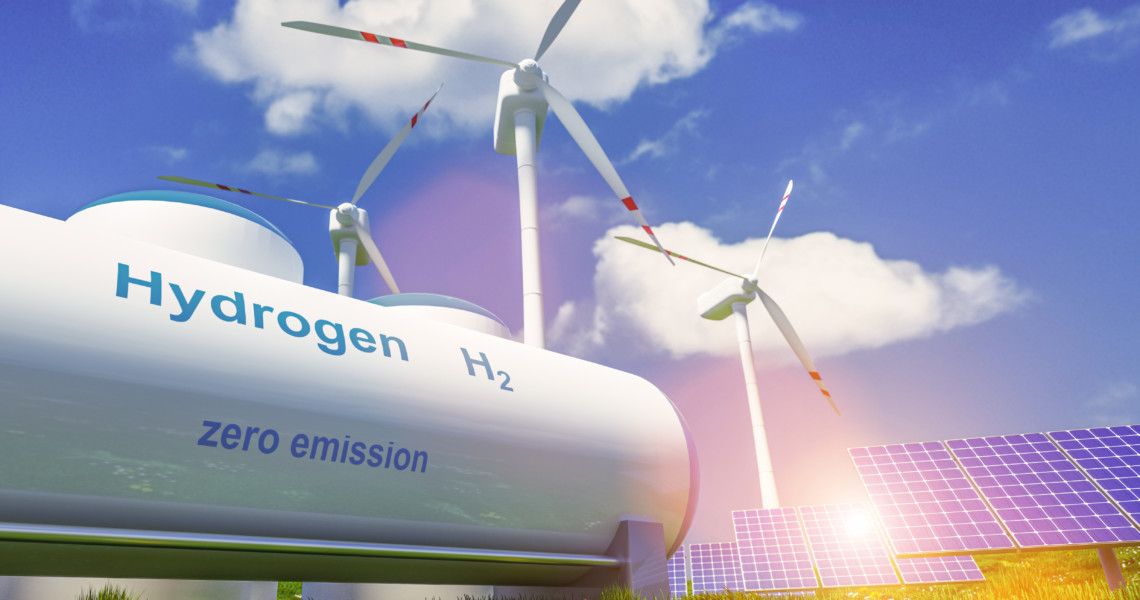In this series of articles, the leading professionals from AFRY share their insights on topics that affect Scanfil, our customers and the whole industry. This article is written by Leena Sivill, Senior Principal at AFRY.
Hydrogen has emerged as a strong contender in energy and climate policy discussions in recent years. It can solve many practical challenges related to transitioning away from fossil energy sources and feedstocks. However, the effectiveness of hydrogen economy in climate change mitigation requires that hydrogen is produced in a carbon-neutral manner.
Hydrogen can be produced in a carbon-neutral manner through the electrolysis process using renewable energy sources or through steam reforming of biogas (known as green hydrogen), or by producing hydrogen conventionally from fossil fuels and capturing the resulting carbon dioxide (known as blue hydrogen). The role of hydrogen from nuclear power has also been raised as a question in the climate debate.
Hydrogen is currently cheaper to produce from fossil fuels (natural gas, heavy fuel oil, and coal) through steam reforming or partial oxidation (known as grey hydrogen) than from alternative energy sources. However, the investment and operating costs of electrolysis technology are expected to decrease in the future, and the availability of renewable electricity is expected to increase, which will facilitate the transition to a carbon-neutral hydrogen economy. In addition, strong policy measures are needed to ensure that the transition occurs widely and quickly enough to meet climate targets.
Policy instruments to boost the hydrogen economy
As part of the European Union’s Green Deal program, two strategies were published in July 2020 to promote the adoption of low-carbon solutions. One of these strategies concerns the interaction between energy systems (sector integration strategy), and the other concerns the development of hydrogen infrastructure and markets (hydrogen strategy). These strategies aim to prepare EU policy measures to integrate hydrogen into EU and member state infrastructure projects, as well as energy market and infrastructure regulation.
The resurgence of the hydrogen economy is driven by the need to achieve carbon neutrality. The role that hydrogen finally plays will depend on the policy measures, markets, and ultimately the choices made by companies and end-users participating in the supply chain. At this stage, infrastructure and regulatory readiness must be built to ensure that the operational conditions for a hydrogen economy are in place at least for the implementation of the most essential solutions.
Affordable electricity prices and a strong transmission network are advantages in the hydrogen economy
Hydrogen is currently used in many industrial processes, e.g., refining petroleum, treating metals, producing fertilizers and processing food. The question is how much of the current use of hydrogen could be converted to carbon-neutral hydrogen, and how much hydrogen will be needed for these industries in the future.
Another obvious question is where hydrogen could be used for new industrial and transportation solutions, and how much demand for hydrogen would arise from these.
The third question is what opportunities the hydrogen economy opens up for companies. The hydrogen value chains extend from carbon-neutral electricity production through hydrogen to various end products. Different production, storage, transportation, and distribution technologies and services are needed in different parts of the value chains and investment or product life cycles. Furthermore, as hydrogen economy is broadly connected to many existing value chains and energy infrastructures as a whole, the concept of sector integration goes hand in hand with the hydrogen economy.
A key question throughout Europe is the extent to which existing gas infrastructure could be used for hydrogen transmission and distribution in the future, if/when the use of fossil gas decreases. With regards to gas infrastructure, there is a lively discussion about the significance of carbon capture and storage (CCS) and carbon capture and utilization (CCU) alongside carbon-neutral hydrogen. CCS and CCU would enable the use of existing gas and fuel infrastructure for hydrogen production and transmission. On the other hand, in the hydrogen strategy, CCS is seen as a temporary solution, and CCU does not change the carbon balance. Another key question is what requirements the hydrogen economy will place on power systems.
Hydrogen economy in the startup phase – where should public funding be directed?
We are in the startup phase of the hydrogen economy, where research and pilot projects as well as feasibility studies are being carried out to start commercial production. Legislation and regulation have not yet been largely implemented, and the technical concept and financing of commercial projects are being prepared. Pilot and demonstration projects are competing for public funding, but it is still unclear where other public support will be granted in the future, either nationally or through the EU’s common financing instruments.
For the future, it is essential to understand the importance of public funding for the development of hydrogen economy. For this reason, several countries have developed national hydrogen strategies aimed at achieving both energy and climate goals and ensuring the economic benefits of projects. However, countries are not responsible for individual company strategies, even if a national hydrogen strategy exists. Its implementation depends primarily on the companies’ own ability to conduct business using hydrogen, which is also defined by many other factors.
This poses a challenge for directing public funding – how to define among the range of projects those where the use of public funds is justified. The EU taxonomy has been created to help member countries direct funding towards measures that promote sustainable development. In addition, alternative future scenarios need to be considered, where the development of the hydrogen economy is guided by different drivers. These increase the understanding of the consequences, benefits, drawbacks, and interdependencies of different development paths from the perspective of energy, climate, and the economy.
Leena Sivill
Senior Principal at AFRY
